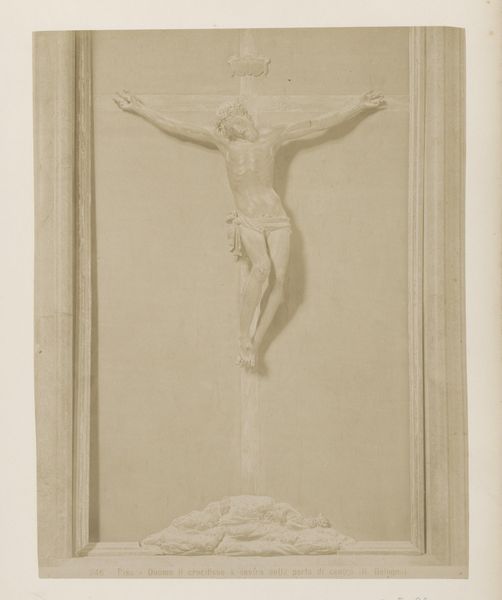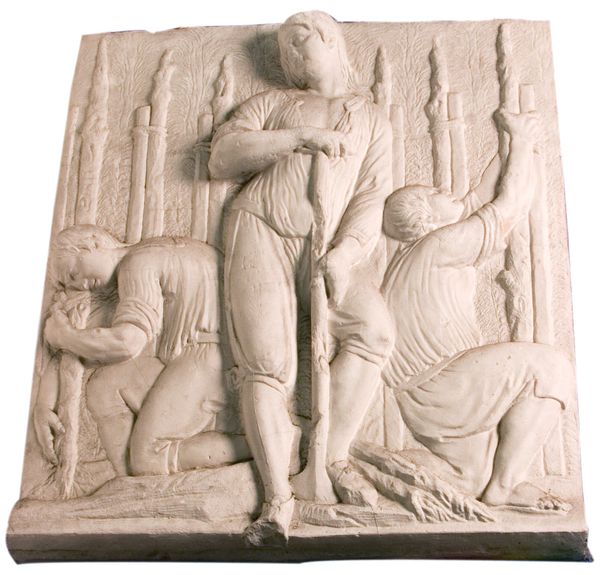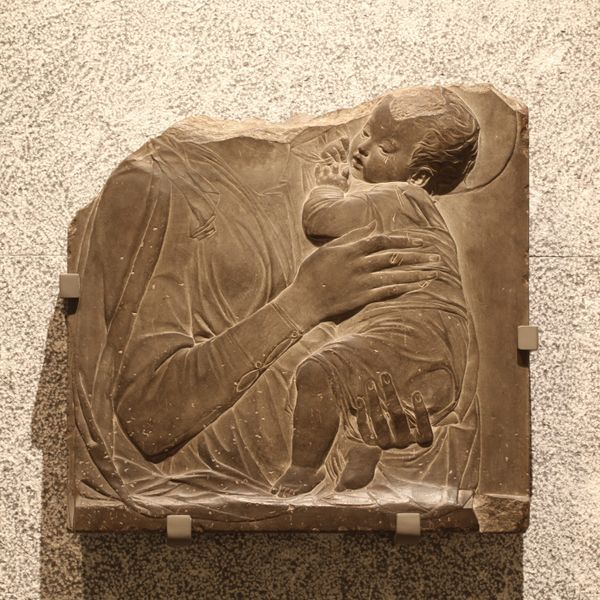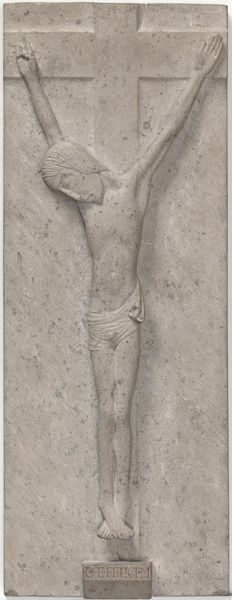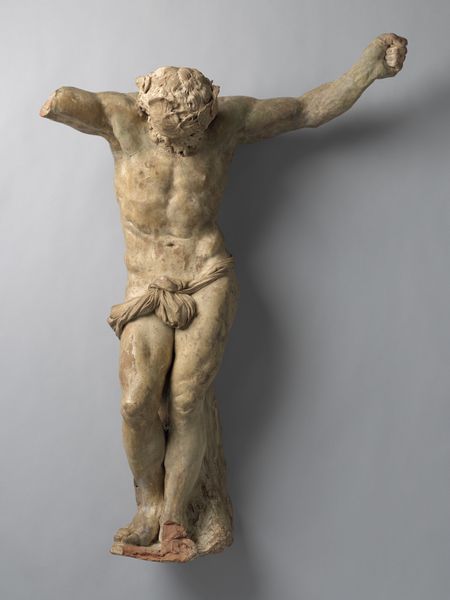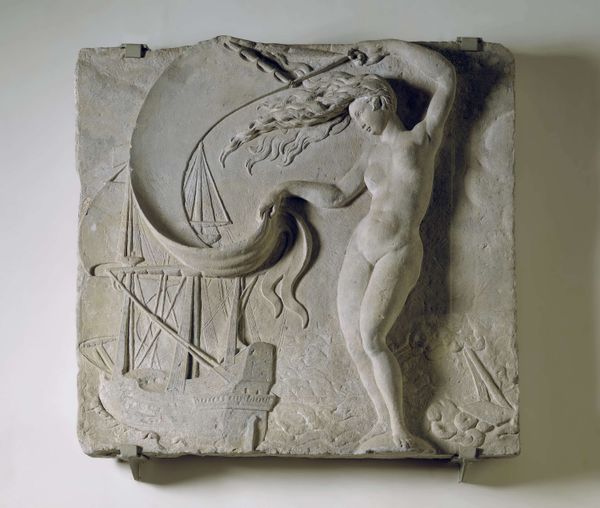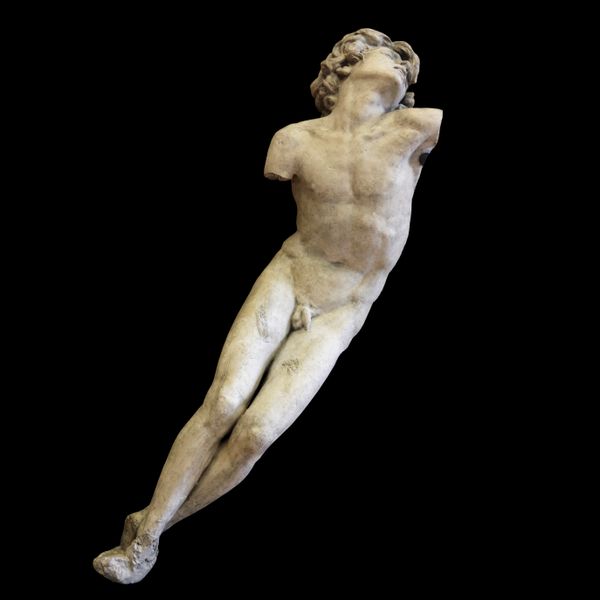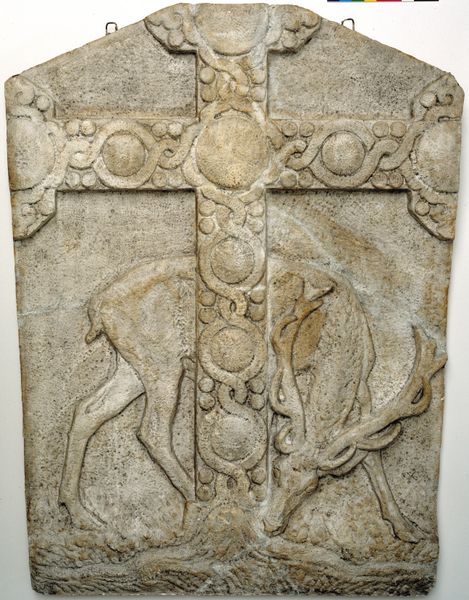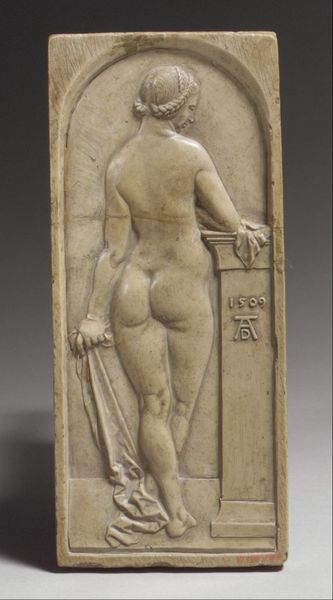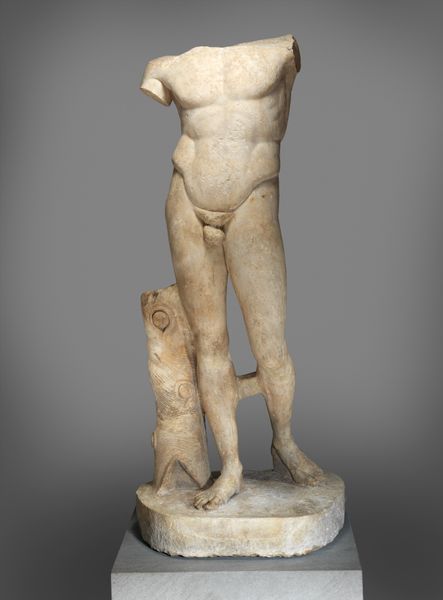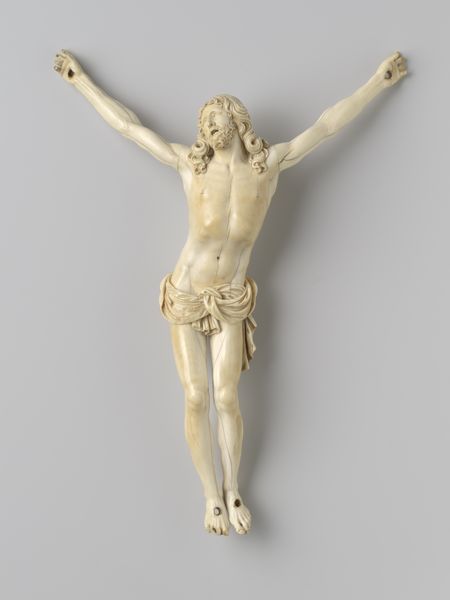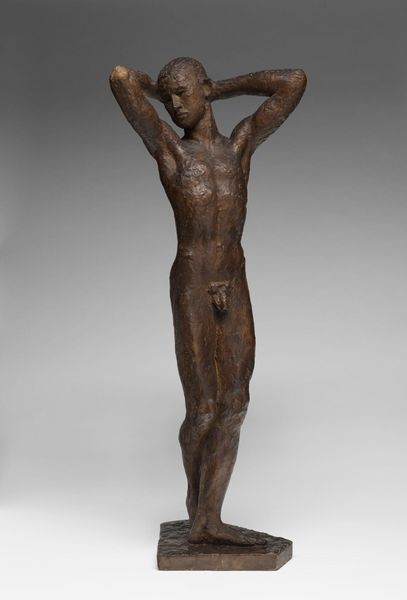
Dimensions: object: 946 x 781 x 127 mm
Copyright: CC-BY-NC-ND 4.0 DEED, Photo: Tate
Curator: Eric Gill's stone relief, "Crucifixion," presents a compelling study in form, line, and texture. Editor: It hits you right away, doesn’t it? That stark image... It feels so detached, so composed. Almost serene, in a way. Curator: Observe how the incised lettering functions both as text and as a visual element—contributing to the overall geometric composition. Editor: And the figure itself—the lean, almost androgynous form. It strips away the melodrama. Curator: Indeed. The emphasis is not on suffering, but on the formal relationships between figure and ground, plane and line. Editor: Still, there's something incredibly human in that tilted head, isn't there? A quiet surrender. Curator: Perhaps, but the work's power lies in its formal rigor, its articulation of space and surface. Editor: I suppose even in the face of stark geometry, humanity can still find a way to peek through.
Comments
Join the conversation
Join millions of artists and users on Artera today and experience the ultimate creative platform.
tate 7 months ago
⋮
Gill was one of several sculptors in Britain and abroad who pioneered the revival of the traditional skill of carving in wood and stone. Like many modern artists, he drew inspiration from what was then seen as ‘primitive’ art. This included non-western carvings and ancient and Medieval European art. This work can be related to medieval English carvings and to the work of Paul Gauguin, which was itself influenced by African and Polynesian art. Gallery label, July 2007
